Want to spark fresh ideas? Whenever you face a new challenge or problem with your team (or even solo), try this! Turn a blank slate into a concise, well-assessed list of viable ideas ready for action.
⏱️ How much time will I invest?
- Over multiple days: two short sessions, about 1 hour each.
- Half-day experience: two sessions for about an hour each, with a longer break in the middle.
💬 What example scenario will be used in the tactics below?
Pip Creative Consultancy Company is planning an “Idea Storm” session to generate innovative solutions for enhancing communication between their creative and consultant teams. This brainstorming approach will involve collaborative and dynamic idea generation, focusing on breaking down departmental barriers and fostering open, creative dialogue.
1
Use How Might We… to frame your problem as a question
Use How Might We… to frame your problem as a question
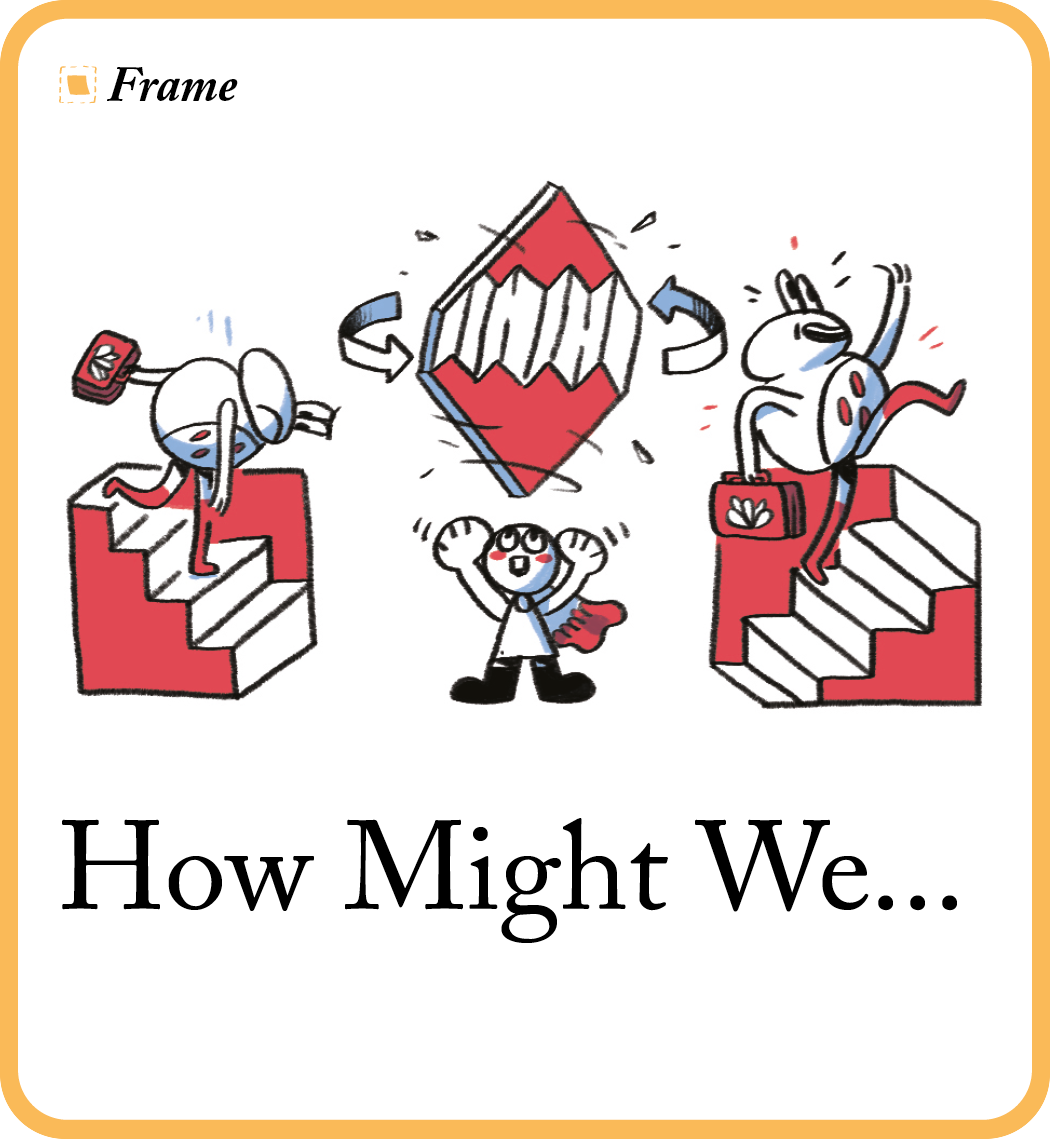
⏱ Time: 1 hour
🧠 What’s the goal? Frame your problem as a question to get the group into a solution mindset.
👀 Why is this important? This tactic transforms problems and observations into solvable questions. A problem on its own can seem daunting. Rephrasing problems as questions is a powerful way to switch the mind from panic mode to solution mode.
💡 Tip: ask yourself if your question allows for a variety of solutions. If it doesn’t, broaden it.
Instructions
- Gather information about the problem you are solving. This could be in the form of recording an interview with an expert on the problem, or compiling research findings into a presentation (completed before workshop).
- Since this is the start of your overall workshop, make sure to start with an icebreaker to warm everyone up.
- Inform the group that as they watch the interview or presentation, they should write down any problems they hear as ‘How Might We…’ question, one per sticky note. (5 minutes)
- Explain how to write a How Might We… question: rephrase a problem you hear as a question, so that it asks for a solution.

- Present your research about the problem to the group. (25 minutes)
- Invite everyone to stick their notes on the workspace. (15 minutes)
- If you have a lot of competing questions, use Priority Map to work out which one to tackle first. (10 minutes)
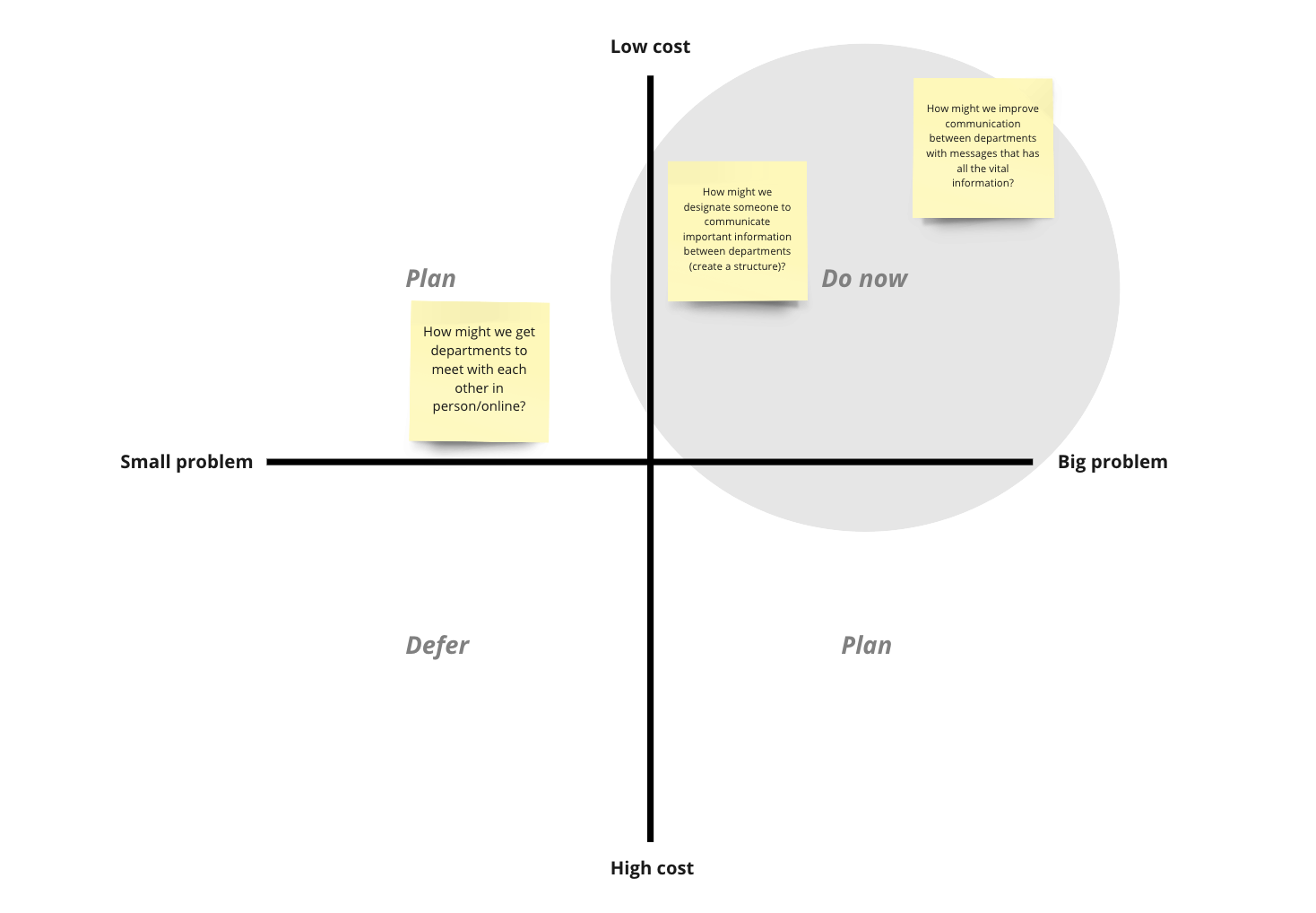
⬇️ In the next tactic, take these questions and generate ideas with a Idea Eight.
2
Use Idea Eights to generate more ideas
Use Idea Eights to generate more ideas

⏱ Time: 35 mins
🧠 What’s the goal? Generate lots of ideas and share them with each other.
👀 Why is this important? This tactic generates a lot of ideas, quickly. Sometimes, to be truly creative, our brains need structure and rules. By restricting space and time, but letting everyone know that anything goes – this tactic forces ideas out, fast.
💡 Tip: encourage people not to overthink their ideas, you might want to even provide an example or two of how creative people can be. You can also pair up people into teams if your groups is struggling to find ideas alone.
Instructions
- Fold a piece of paper three times to make a grid of eight rectangles. (2 minutes)

- Define the problem to solve in the form of a How Might We… question (see tactic one). (2 minutes)
- Set a timer for one minute per crazy idea (one idea per box) and encourage each person (or groups of two) to write or draw as many ideas as possible. (8 minutes)
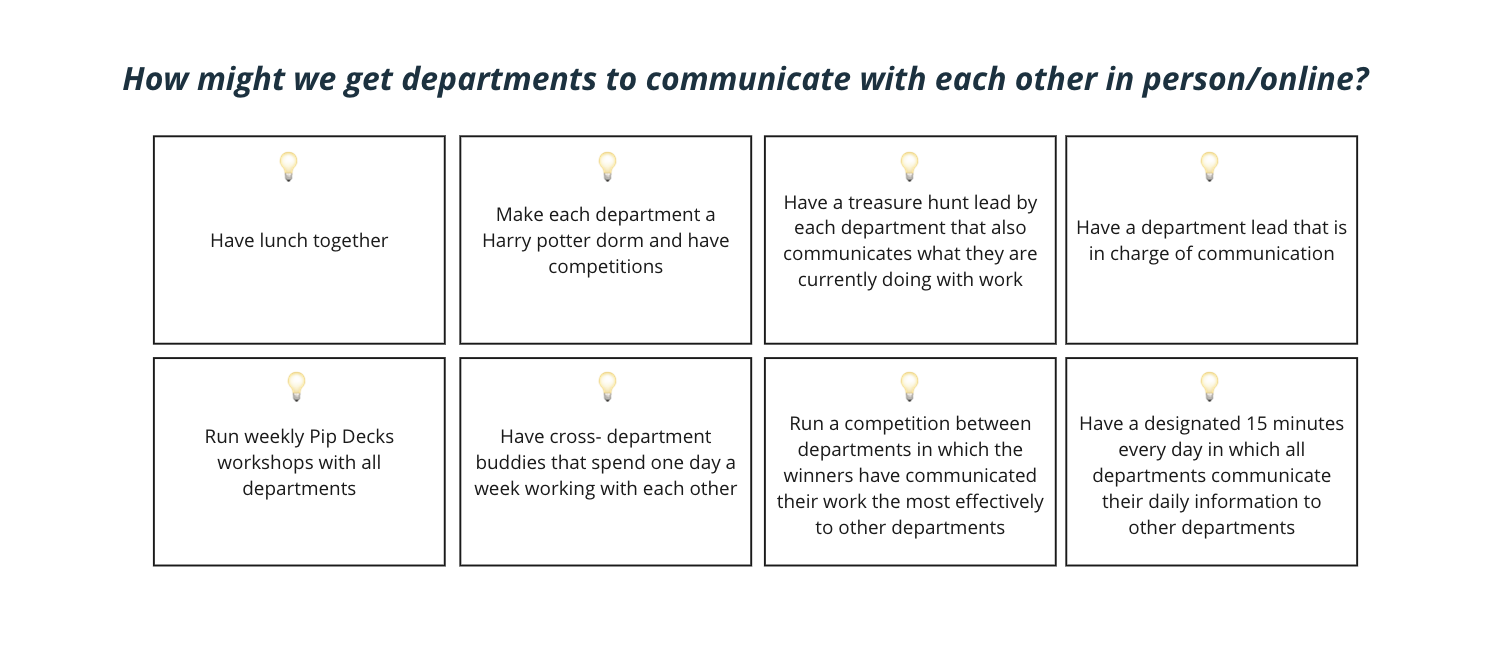
- At the end of the eight minutes, ask each person to talk through their ideas and steal each other’s ideas for the next step. You can also use the topics generated during the Mind Map exercise for inspiration. (5 minutes)
- Repeat the exercise for different How Might We… questions from the first tactic. You can also give each group a different How Might We… question if you’re tight on time. (8 minutes)
-
Ask each participant to present their final ideas to the group. (10 minutes)
⬇️ In the next tactic, each person chooses their favourite idea and will develop them further with T-Bar Format.
3
Use T-Bar Format to develop your ideas further
Use T-Bar Format to develop your ideas further
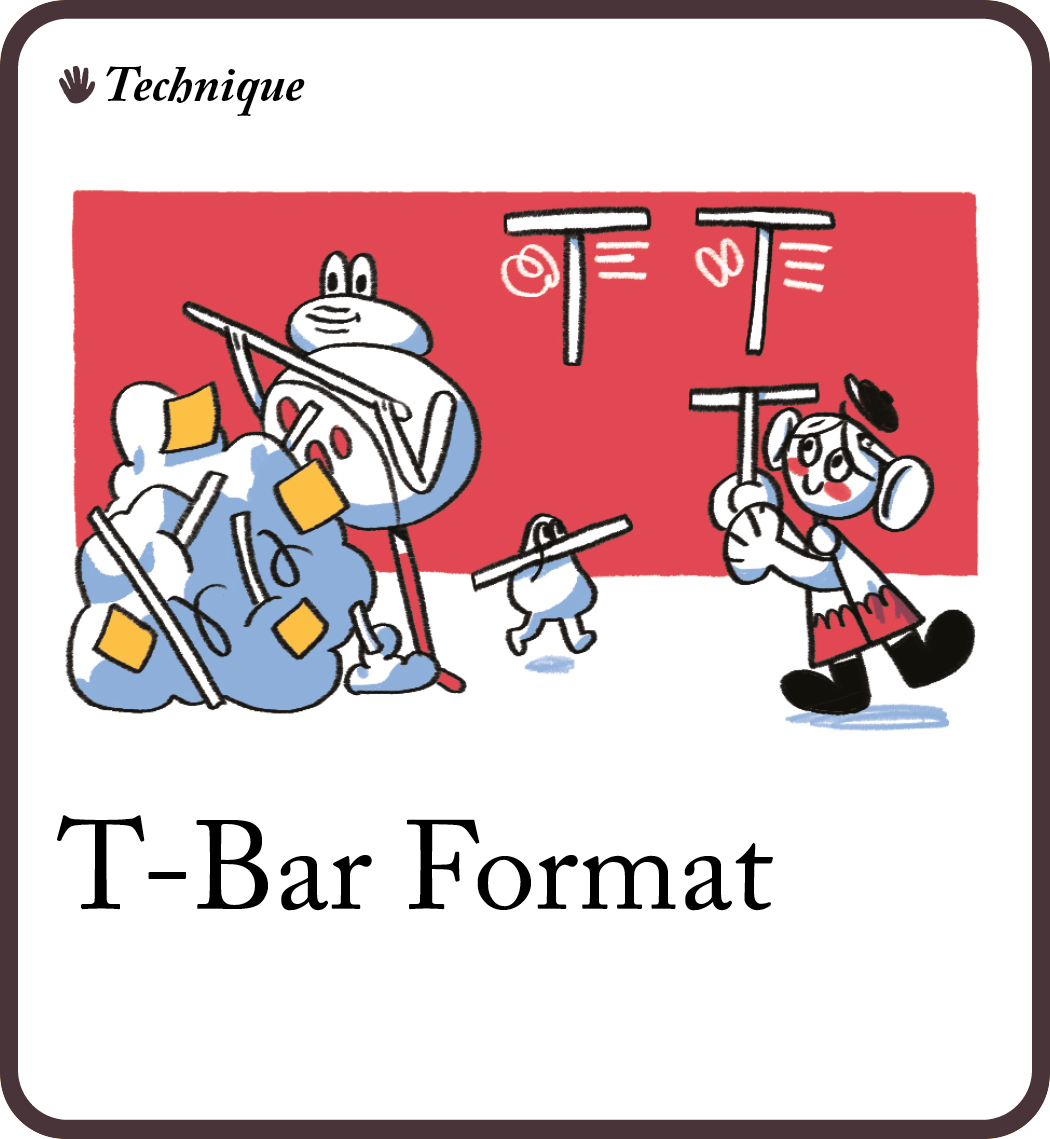
⏱ Time: 30 mins
🧠 What’s the goal? develop and clarify your ideas by drawing them up.
👀 Why is this important?This tactic helps you put your ideas into a format that can explain itself. Having clearly articulated ideas in a consistent format makes them easier to understand and compare in a group. It also encourages the development of an idea by expanding on the detail and function.
💡 Tip: to save time have the T-bar format already prepared (step 1) for all participants ready to use.
Instructions
Ask every participant to follow these instructions:
- For chosen idea, draw a ‘T’ covering the height and width of a piece of paper. (1 minute)

- On the right, give your idea a description that is easy to read. Bullet points are your friend. (3 minutes)
- Draw your idea on the left. It doesn’t have to be a work of art. It just needs to help communicate your idea. (5 minutes)
- At the top, give your idea an inspiring title. The title should communicate your idea clearly. (6 minutes)
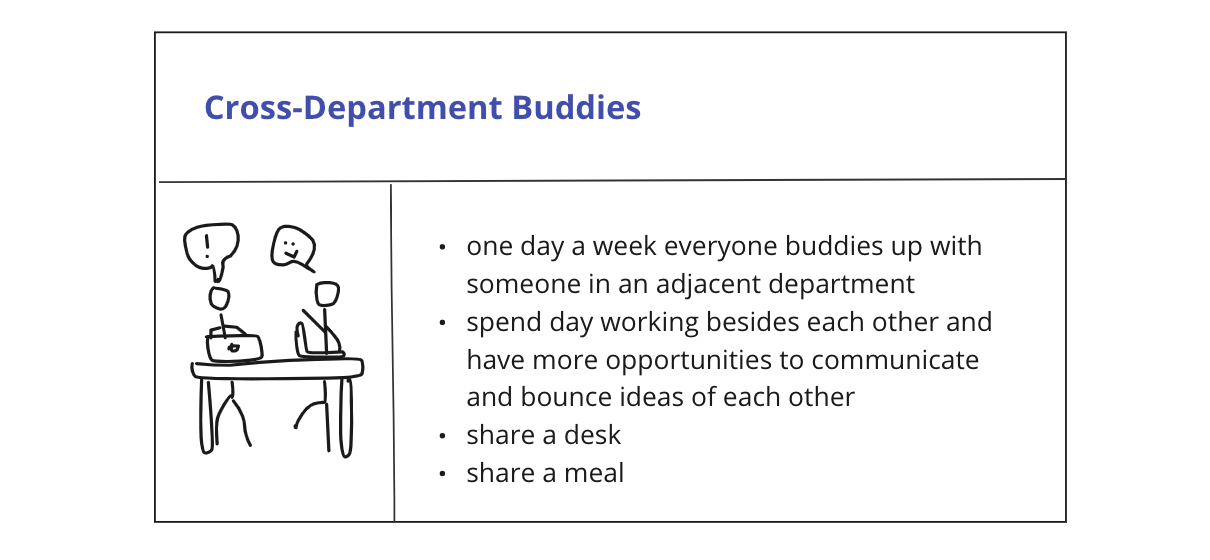
Now, as a group:
- Each stick your T-Bars up on the wall and present them. (10 minutes)
- Prioritise the top three ideas with Secret Vote. (5 minutes)
⬇️ Now that you have generated and expanded your ideas, it is time to put some into action! Use Who, What, When to help you do this.
📚 What do I need before I start?
In person
- Prepare (book room, invite people, write and share agenda)
- Materials (whiteboard, sticky notes, pens)
- Tech check (charger, adapter, screen projector)
- Room (refreshments, temperature, chairs, wall space)
Hybrid
- Prepare (book room, send call link, invite people, write and share agenda)
- Materials (whiteboard, sticky notes, pens, Miro board)
- Tech check (charger, adapter, screen projector)
- Room (refreshments, temperature, chairs, wall space)
Online
- Prepare (invite people, write and share agenda, create and send call invite)
- Materials (Miro board)
- Tech check (charger, adapter, Microphone/headphones)
✨ Extra reading
- Read about your role as a Facilitator
- Prepare some Icebreakers
- Invite the right Stakeholders
💭 What next?
Congratulations you have completed your Idea Storm! You have put a problem through its paces by gathering lots of ideas, narrowing them down and evaluating them.
With all these new ideas, it is time for a Design Dash to get your ideas to a testable solution.


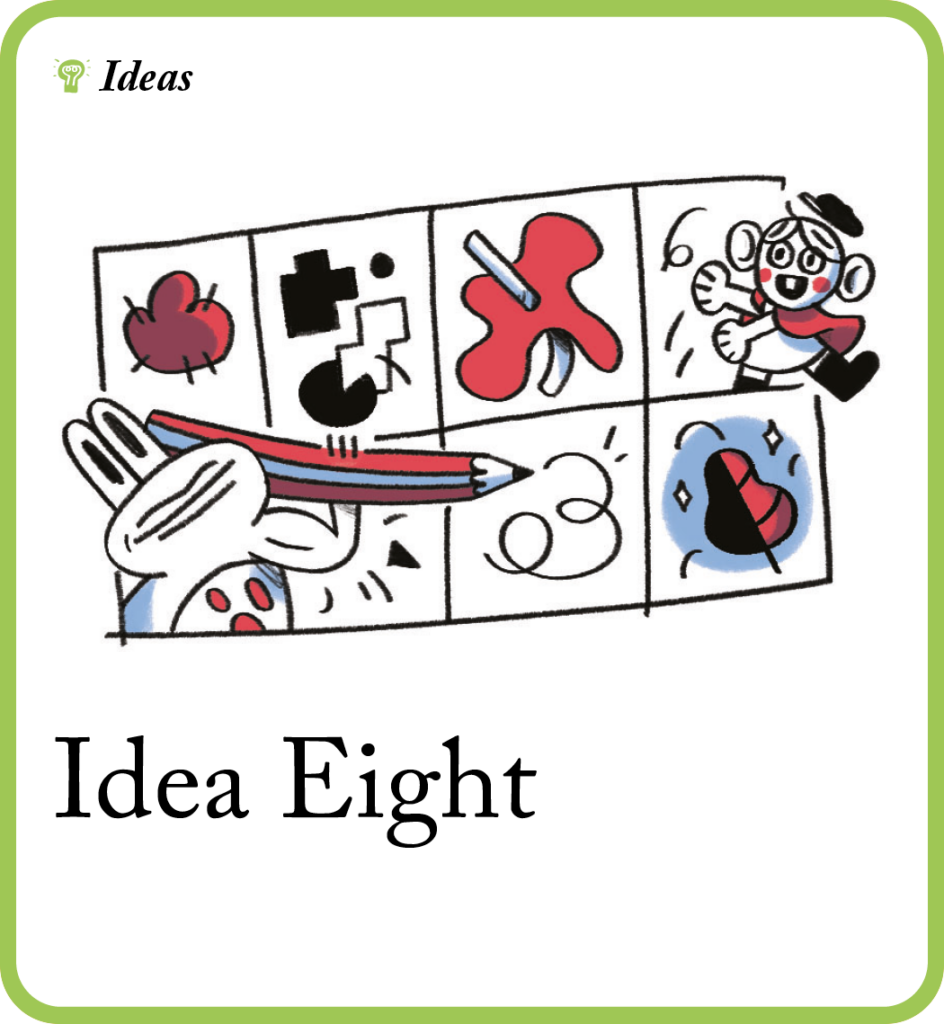

This is just what I needed. Have the cards was nice but I struggled with putting utilizing in a functional way. This helps me get started and will help me get the most from my purchase. Much appreciated!